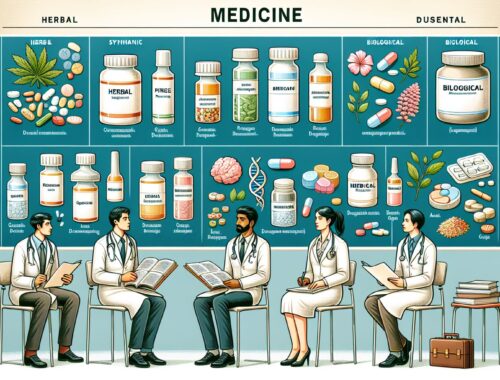
Understanding the Different Types of Medicines
In today’s modern world, there is a multitude of medicines available to treat various ailments. From over-the-counter pain relievers to prescription medications, it’s essential to understand the different types of medicines and their purposes. In this article, we will delve into the classifications and functions of these medications, providing you with a comprehensive overview.
Types of Medicines
Medicines can be categorized into several different types based on their composition and intended use. Here are the most common classifications:
1. Analgesics
Analgesics, or pain relievers, are medications used to alleviate pain. They can be further classified into two groups: non-opioid and opioid analgesics. Non-opioid analgesics, including acetaminophen and nonsteroidal anti-inflammatory drugs (NSAIDs) like ibuprofen, are generally used for mild to moderate pain. Opioid analgesics, such as morphine and oxycodone, are potent pain relievers suitable for severe pain but may carry a higher risk of addiction.
2. Antibiotics
Antibiotics are medications used to treat bacterial infections. They work by either killing bacteria or inhibiting their growth. It’s important to note that antibiotics are ineffective against viral infections like colds and the flu. Overuse or misuse of antibiotics can lead to antibiotic resistance, making them less effective in the long run.
3. Antidepressants
Antidepressants are medications prescribed to manage depression, anxiety disorders, and other mental health conditions. They work by balancing the chemicals in the brain that affect mood and emotions. There are several classes of antidepressants, including selective serotonin reuptake inhibitors (SSRIs), serotonin-norepinephrine reuptake inhibitors (SNRIs), and tricyclic antidepressants (TCAs). Each class works in a slightly different way.
4. Antihistamines
Antihistamines are commonly used to relieve allergy symptoms, such as sneezing, itching, and runny nose. They work by blocking histamine, a chemical released during an allergic reaction. Antihistamines are available in both sedating and non-sedating forms, with the sedating ones causing drowsiness and are best taken before bedtime.
5. Antacids
Antacids are medications that neutralize stomach acid and provide relief from indigestion, heartburn, and acid reflux. They work by increasing the pH level in the stomach. However, antacids only provide temporary relief and should not be used as a long-term solution for chronic conditions like gastroesophageal reflux disease (GERD).
Conclusion
Understanding the different types of medicines is crucial for both patients and healthcare providers. Each category serves a unique purpose in treating specific medical conditions. Analgesics can alleviate pain, antibiotics combat bacterial infections, antidepressants manage mental health disorders, antihistamines relieve allergy symptoms, and antacids provide relief from gastric issues. By having a comprehensive knowledge of these medications, individuals can make informed decisions regarding their healthcare. Remember, it’s always best to consult with a medical professional before starting or changing any medication regimen to ensure the most appropriate treatment for your specific needs.

Different Types of Medicines
You May Also Like

The Different Types of Medicines
March 13, 2024
Understanding the Different Types of Medicines
January 13, 2024
